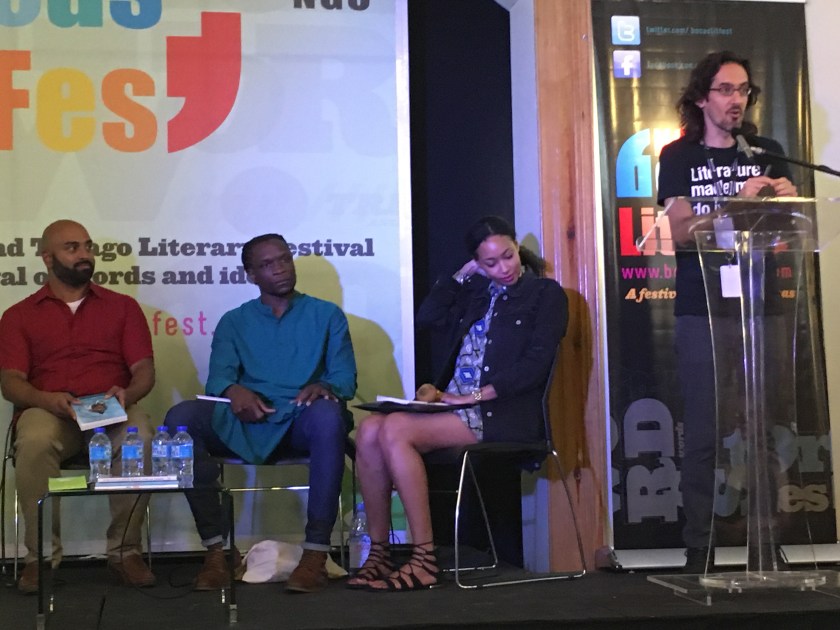
Kingston on the Edge (KOTE), an urban art festival held every June, will not celebrate its tenth anniversary this year due mainly to dwindling support from corporate Jamaica. The email press release from the organizers of the festival said simply:
“The staging of KOTE is a large undertaking and can be difficult given that it is a 10 day studio and performing art festival held at over 26 venues throughout Kingston with hundreds of artists participating.”
“This year KOTE Milestones would have been our 10th anniversary however unfortunately given a combination of factors and unforeseen circumstances including not least of all the financial strain of the festival, we have been forced to cancel KOTE 2017.”
The cancelling of KOTE is a blow to Kingston’s cultural calendar as it was a showcase for artists, writers, musicians, poets, dancers and others involved in the expressive arts. Typically KOTE events catered to aficionados of alternative music (alternative to Reggae and Dancehall that is), modern dance, poetry, theatre, architecture, pottery and visual art, bringing a wide range of patrons, young and old, out of their closets for this rich cultural immersion.

For example at KOTE 2015, David Marchand, the fantastically eccentric and reclusive visual artist found dead in his Runaway Bay home last week, had his first solo exhibition in 23 years featuring 55 of his art works. Titled “Tsunami Scarecrow: A David Marchand Retrospective” the launch of the exhibition featured opening words by Maxine Walters, a dedicated patron of his work, jazz compositions by Seretse Small and a preview of a documentary on Marchand by Chloe Walters Wallace. Marchand liked to think of himself as “a visual Bob Marley”, but I think Lee ‘Scratch’ Perry offers a better comparison.
Another year the highlight of KOTE was a guided bus trip starting at Wolmer’s Boys’ School, the site of the 1891 World Fair and stopping at different locations in Kingston that once were tourist sites. Conducted by architect Evon Williams, the tour extended from the site of the now defunct Myrtle Bank Hotel downtown to Immaculate Conception Convent in uptown Kingston once better known as the Constant Spring Hotel. To visit its beautiful lobby and environs is to take a step back in time, for the nuns have changed the buildings very little and done a good job of maintaining its serene ambiance.
KOTE also pioneered what has become a regular feature of the National Gallery of Jamaica, its Last Sundays programme, when the Gallery is open to the public for free with performative offerings in addition to the art exhibtions. Hard to believe that sponsors were not forthcoming for such a beautifully curated series of events showcasing Kingston as the creative hub it is.
Trinidad and Tobago, on the other hand, even with a depressed economy due to plummeting oil prices was able to find the resources to continue hosting their excellent little literary showcase, the NGC Bocas Lit Fest. Aside from their title sponsor, the Trinidad and Tobago Gas Company, Bocas has 30 or more other sponsors including One Caribbean Media willing to support and celebrate Caribbean talent.

Jamaica dominated the festival this year, leading people to refer to it as the Jamaican Bocas, which culminated in Kei Miller winning the overall Bocas Award for his consummate novel, Augustown. Also in the running was another Jamaican, Safiya Sinclair, for her book of poetry, Cannibal. Safiya was the Bocas winner for poetry this year and is the latest wunderkid of Jamaican poetry to hit the international circuits, winning several mainstream fellowships and awards.
Another headliner at Bocas Lit Fest this year was Ishion Hutchinson, the Portland prodigy, the shearing of whose locks as a schoolboy inspired Kei Miller’s novel, Augustown. Hutchinson’s many honors include the American National Book Critics Circle Award for Poetry, a Whiting Writers Award and the Larry Levis Prize from the Academy of American Poets; he is also a finalist for the L.A. Times Book Prize in poetry. Like Sinclair, Ishion grew up in a Rasta household, she in Montego Bay and he in Port Antonio.
Festivals such as KOTE and Bocas are also about developing a ground for home-grown talent to thrive in…for how much longer can we expect our best and brightest to live in their heads? Safiya Sinclair pinpoints the sense of ‘unbelonging’ quite eloquently:
“Home was not my island, which never belonged to us Jamaicans, though it’s all we’ve known, and home was not my family’s house, which we’ve always rented, all of us acutely aware of the fact that we were living in borrowed space, that we could never truly be ourselves there. Home was not the body. Never the body—grown too tall and gangly too quickly, grown toward womanhood too late. Like a city built for myself, home was a place I carved out in my head, where the words were always the right words, where I could speak in English or patois, could formulate a song or a self. Home for me has always been poetry.”


Unless, I missed it, the organizers are less than forthcoming about why the festival had to be cancelled. The remark that ‘given a combination of factors and unforeseen circumstances including not least of all the financial strain of the festival, we have been forced to cancel KOTE 2017’ says little and nothing.
That is certainly true…but the fact remains…the festival was cancelled.
Indeed, but the organizers don’t put themselves in a good position to do anything about cancellation being a permanent state. Cynics could run with that…